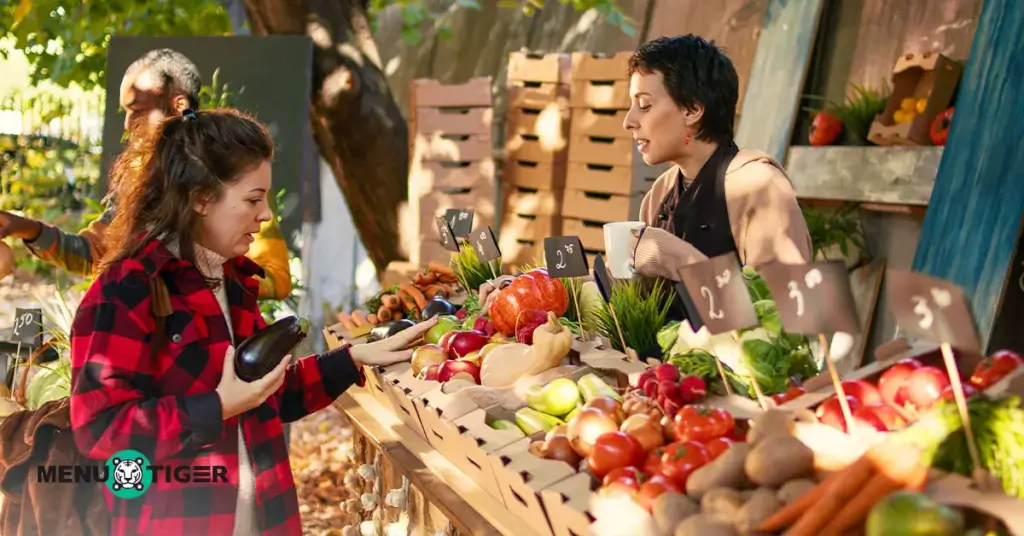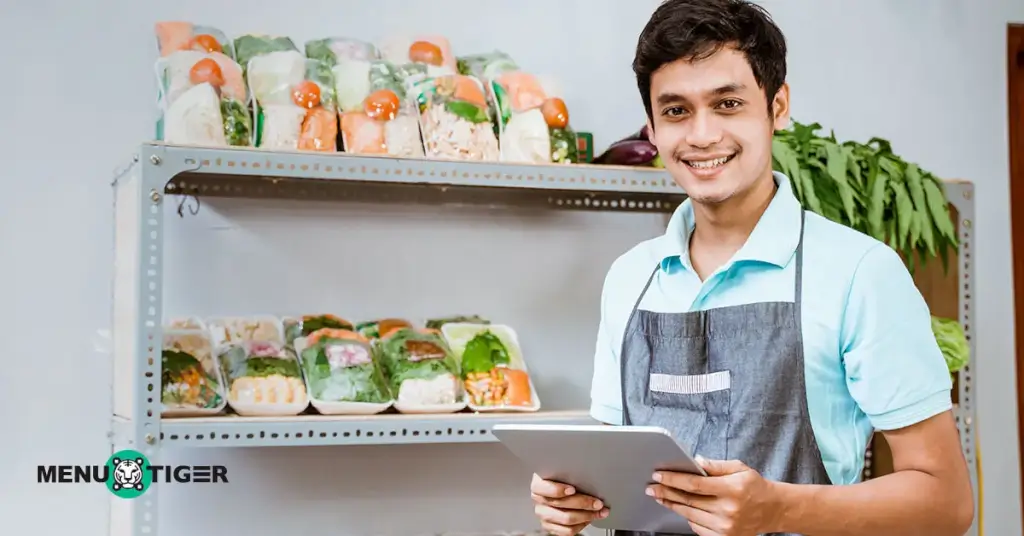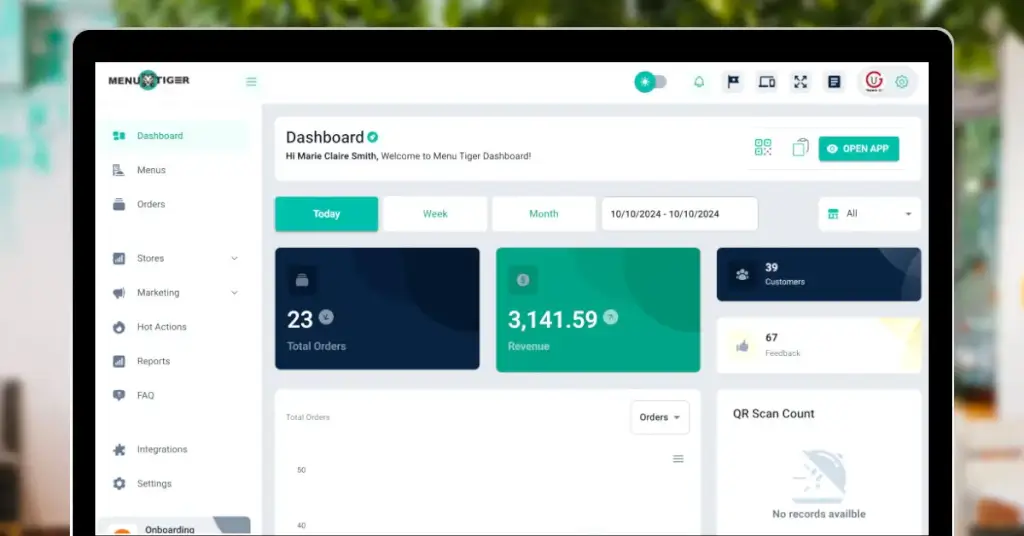
How To Start An Eco-Friendly Restaurant That Saves Money
Last Updated: June 27, 2025
Two significant problems most restaurant owners face are billions of dollars of food waste and excessive operational expenses. The U.S. Department of Agriculture reported that over 22 to 33 billion pounds of food is wasted each year, which is estimated to be worth about $162 billion annually. Food waste can account for 4% to 10% of the food purchased for a single restaurant, which is a significant loss.
That’s why rethinking a shift to an eco-friendly restaurant model is not just a moral decision, but a strategic one.
Adapting sustainable practices such as composting, portion control, inventory tracking, or QR code menus can significantly reduce food waste and excessive operational expenses.
In the long run, going green can lead to improved margins, enhanced brand reputation, and a more resilient business model in an industry where every dollar counts.
What is an eco-friendly restaurant?
An eco-friendly restaurant minimizes its environmental impact by adopting sustainable practices while doing business.
These practices include reducing food waste, which is an urgent issue in the U.S., where up to 33 billion pounds of food are discarded annually. Common strategies involve composting, better inventory management, sourcing organic ingredients locally, and reducing single-use plastics.
Sustainability isn’t just a trend, but a priority for consuers. In fact, 90% of diners value eco-conscious dining experiences and are willing to pay more for it.
This growing demand is pushing restaurants to go beyond the kitchen. Many now use natural materials in their interiors or power operations with renewable energy.
The mission? To serve delicious food while protecting the planet.
A step-by-step guide to help you build one

If you’re up for it, here’s an easy-to-follow roadmap on building a sustainable, environmentally-focused restaurant:
Step 1. Define your green mission
Your green mission is the foundation of your restaurant
Start by identifying what matters most to you. Do you want to focus on zero-waste, plant-based food, energy efficiency, or local sourcing? Pick one or two areas that align with your brand values and are practical for your budget and location.
Let this mission guide your menu theme, design choices, staff culture, and restaurant marketing tools so everything aligns with your brand values and attracts like-minded customers.
Keep it clear, simple, and consistent.
Step 2. Choose a smart location
Location matters not just for foot traffic, but also for sustainability.
Look for energy-efficient buildings or LEED (Leadership in Energy and Environmental Design)-certified spaces. Even older buildings can be upgraded with better lighting, insulation, and appliances.
Prioritize walkable neighborhoods with public transportation and bike access
Less reliance on cars means fewer emissions, and you’ll likely save on parking infrastructure.
Step 3. Design with sustainability in mind
Use reclaimed or recycled materials for furniture and decorations. Maximize natural light to cut electricity used during the day, and use energy-efficient lighting and appliances where possible.
Install low-flow faucets and toilets to save on water bills. Keep the layout functional to avoid wasted space and energy.
Need help? Work with restaurant architects who specialize in sustainable design.
Step 4. Source local and sustainable ingredients

Buy local whenever possible.
Sourcing ingredients from nearby farms means fresher food, fewer emissions, and supports the local economy.
Seasonal produce is usually cheaper and tastes better. Work with suppliers who care about organic and low-waste practices.
It’s a simple way to stay environmentally-focused while keeping your food costs in check.
Step 5. Reduce waste at every stage
Minimize waste to cut costs and stay sustainable.
Start with smarter inventory management to avoid over-ordering and make full use of ingredients to reduce food waste.
Implement composting and recycling systems. Donate surplus food where regulations allow.
Swap single-use plastics with reusable or compostable alternatives. You can also start offering smaller portion sizes or charging for takeout packaging, which can significantly reduce waste and boost efficiency.
Step 6. Go digital
Replace printed menus with a QR code menu for easy updates and zero printing waste.
Use tablets or POS systems to track your inventory in real time, helping reduce food waste.
Digital receipts are another smart switch. They save paper and are more convenient for guests.
Even staff scheduling apps and digital logbooks can replace old-school paper systems, streamline operations, and reduce clutter.
This is one of the practical, eco-friendly restaurant ideas that guarantees a hit for cost-effectiveness.
Step 7. Train a ‘Green-minded’ team
Your team is the heart of this environmental movement, so it’s important that they not only follow green practices but genuinely understand and believe them.
Start by weaving sustainability into your onboarding process. Explain why it matters, how your restaurant makes a difference, and where they fit in.
Offer regular training on topics such as proper recycling, reducing energy and water use, portion control to minimize waste, and even how to educate guests about your green initiatives.
Recognize and reward staff who go the extra mile; maybe they caught a leak early, suggested a composting idea, or helped save supplies.
The key here is to make sustainability part of the work culture, not just another checklist.
Step 8. Market your sustainability
Don’t be shy about sharing your mission because people care, which can set you apart.
Highlight your green efforts across all your marketing channels: website, social media, email newsletters, and in-store signage.
Let your customers know if you’re sourcing locally, composting food scraps, using biodegradable, eco-friendly food packaging for restaurants, or cutting down your energy use.
Share behind-the-scenes content, like your green initiatives, how you train your team or select suppliers, as this builds trust and shows the authenticity of your management.
Consider adding eco-certifications or badges to your menus or windows if you’ve earned them. When you tell your sustainability story, keep it human and focus on progress, not perfection.
Step 9. Track metrics that matter

Measure what matters.
Identify the key areas: food waste in restaurants and energy and water usage, waste diversion (recycling or composting), and sustainable sourcing.
Use digital tools like a restaurant inventory system or smart management tools to track things like how much food is tossed, utility bills, and supplier information.
Set benchmarks and check in regularly to help you spot patterns, adjust quickly, and celebrate wins.
For instance, if composting cuts your landfill waste by 30%, that’s a huge success story to share.
Tracking not only keeps your team focused on what’s important, but it also gives you insights to back up your mission.
Step 10. Start small, scale smart
Going green doesn’t have to happen overnight; you don't have to overhaul your entire operations.
The smartest and most sustainable approach is to start small. Pick a few easy-to-implement initiatives and build momentum from there.
Maybe it’s switching ot compostable to-go containers, using QR codes for menus, or setting up a recycling station.
Once those changes become second nature, you can scale up and add a tracking system for food waste in restaurants and partner with local farms, or invest in energy-efficient equipment.
Every small change adds up, so there’s no rush. All you need is consistency for long-term progress.
Top 5 eco-friendly restaurants around the world
Need some inspiration for your green restaurant journey? These pioneering restaurants from around the globe are leading the way in sustainable dining, with a unique approach to reducing environmental impact without compromising quality, creativity or flavor.
- Noma Projects (Conpenhagen, Denmark)
Noma is a trailblazer in sustainable fine dining.
The restaurant sources hyper-locally and builds seasonal menus based on Nordic biodiversity. The team continuously experiments with fermentation and preservation to minimize food waste and extend the season's ingredients.
Even the restaurant itself was designed with sustainability in mind, using reclaimed wood and eco-friendly building practices.
- Silo (London, United Kingdom)
Silo proudly calls itself the world’s first zero-waste restaurant.
Everything, from sourcing ingredients to upcycled furniture, is built around the principle of circular design.
Their zero-waste philosophy led them to use flour milled in-house, compost the waste on-site, and have suppliers deliver food in reusable containers.
Douglas McMaster launched Silo with the belief that waste is a design flaw. He’s turned that belief into a philosophy and turned it into a scalable model that’s inspiring chefs and entrepreneurs worldwide.
3. Azumendi (Larrabetzu, Spain)
This three-Michelin-starred restaurant is one of the most environmentally forward-thinking businesses.
Built into a hillside, the restaurant uses geothermal energy and recycles rainwater. An on-site greenhouse supplies fresh ingredients, while the team engages in biodiversity research and local seed recovery.
Chef Eneko Atxa’s mission extends beyond the plate. He wants to change the future of food production and inspire the industry to protect culture and nature.
4. ONA (Arès, France)
ONA, short for Origine Non Animale, was the first vegan restaurant in France to receive a Michelin star.
Claire Vallée crowdfunded the restaurant and partnered with an ethical bank when traditional lenders wouldn’t support a plant-based concept.
The menu is 100% plant-based, organic, and seasonal. Sustainability is baked into every aspect, from natural cleaning products to composting and menial food waste.
5. The Perennial (San Francisco, USA)
The Perennial impact on the sustainable dining movement is one for the books.
It was created to tackle climate change through food using carbon farming, compostable packaging, and a menu focused on sustainable ingredients like perennial grains and aquaponics-grown produce.
The restaurant became a model for climate-positive dining, and after closing the Perennial in 2019, its founders launched ZeroFoodprint, an organization that helps other restaurants reduce their carbon footprint.

Eco-friendly restaurant ideas for your business
Here are creative, high-impact ideas you can implement to reduce waste, build community, and stand out in the eco-conscious dining space.
Embrace an upcycled design aesthetic
Use reclaimed wood, salvaged metal, or repurposed furniture for your sustainable restaurant interior design.
You can create a unique, story-rich environment that aligns with your sustainability message. Even tabletops made from compressed food packaging or ocean plastic can start conversations.
Host “No Waste” menu nights
Design your meals using discarded items like carrot tops, beet peels, bread ends, or imperfect produce.
These nights educate guests while showcasing your kitchen’s creativity and brand value.
Launch a reusable container subscription program
Offer a reusable takeout container subscription.
Customers can get their meals in stylish, returnable containers for a monthly fee using a restaurant POS system for a better transaction. This cuts waste while creating recurring revenue and customer loyalty.
Partner on micro-gardens
Work with local apartment buildings or schools to set up small herb or veggie gardens.
You provide the startup soil and tools, they grow, and you get the harvest.
This strengthens local ties and reduces transport emissions.
Gamify sustainability for guests
Introduce a loyalty program using your restaurant order system where customers earn points not just for purchases, but for sustainable actions.
It could be bringing their containers for takeout, ordering plant-based dishes, or biking to your location.
Adding digital tools like a QR code menu ordering system to your sustainable restaurant ideas

A digital ordering system with QR codes, like MENU TIGER, offers an effective solution to help eliminate the need for physical menus, reduce waste, and enable real-time menu updates that reflect seasonal ingredients or availability.
This restaurant technology supports environmental goals and guarantees to improve operational efficiency, enhance your guest experience with faster, contactless service, and provide valuable data insights for more thoughtful decision-making.
By integrating QR code ordering with a digital menu, sustainable restaurants like yours can align their tech tools with their eco-conscious mission while boosting profitability and customer satisfaction.

Save green by going green: Build a waste-free restaurant with smart, sustainable tech
Delving into an innovative, sustainable business model for your eco-friendly restaurants is an impactful way to save the planet and money.
With its eco-efforts, you can reduce overhead, boost efficiency, and resonate with today’s conscious consumers.
When you invest in innovation, such as digital menu ordering systems and sustainability, you’re creating a dining experience that’s cleaner, leaner, and built for the future.
Now is the time to lead the change. Go green, save green, and turn your restaurant into a force for both good and growth.
FAQs
Chevy
Before joining MENU TIGER's Content Team, Chevy has been dabbling in literary arts for five years, specifically creative writing in a theatre company. She loves exploring her creativity through painting, photography, and contemporary dancing.


